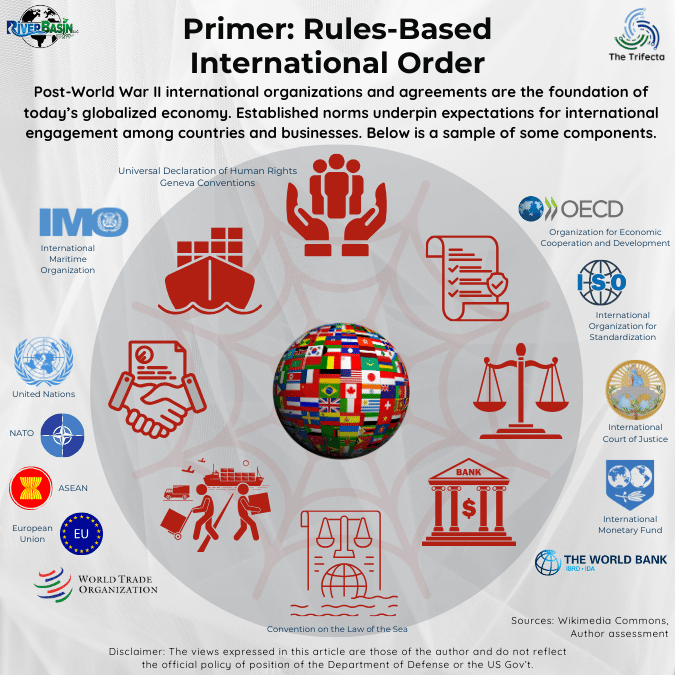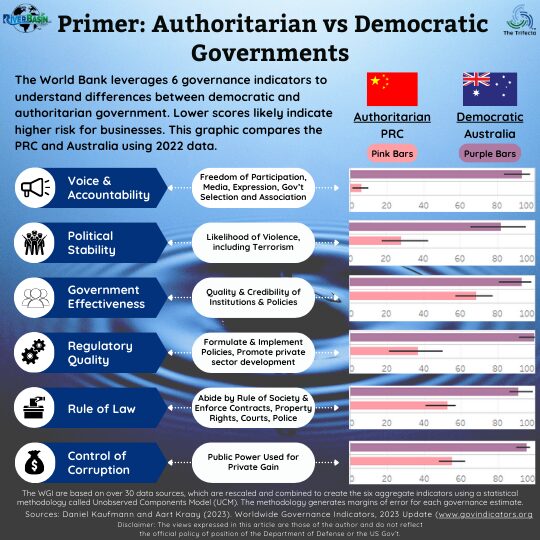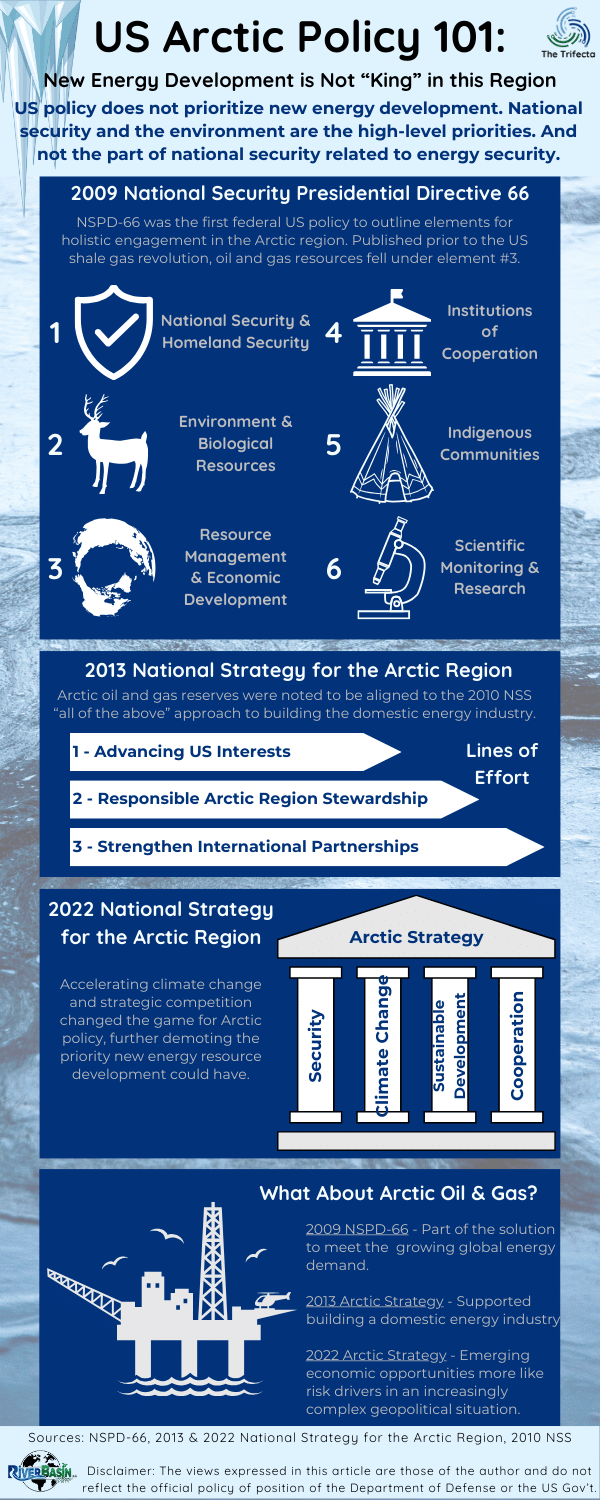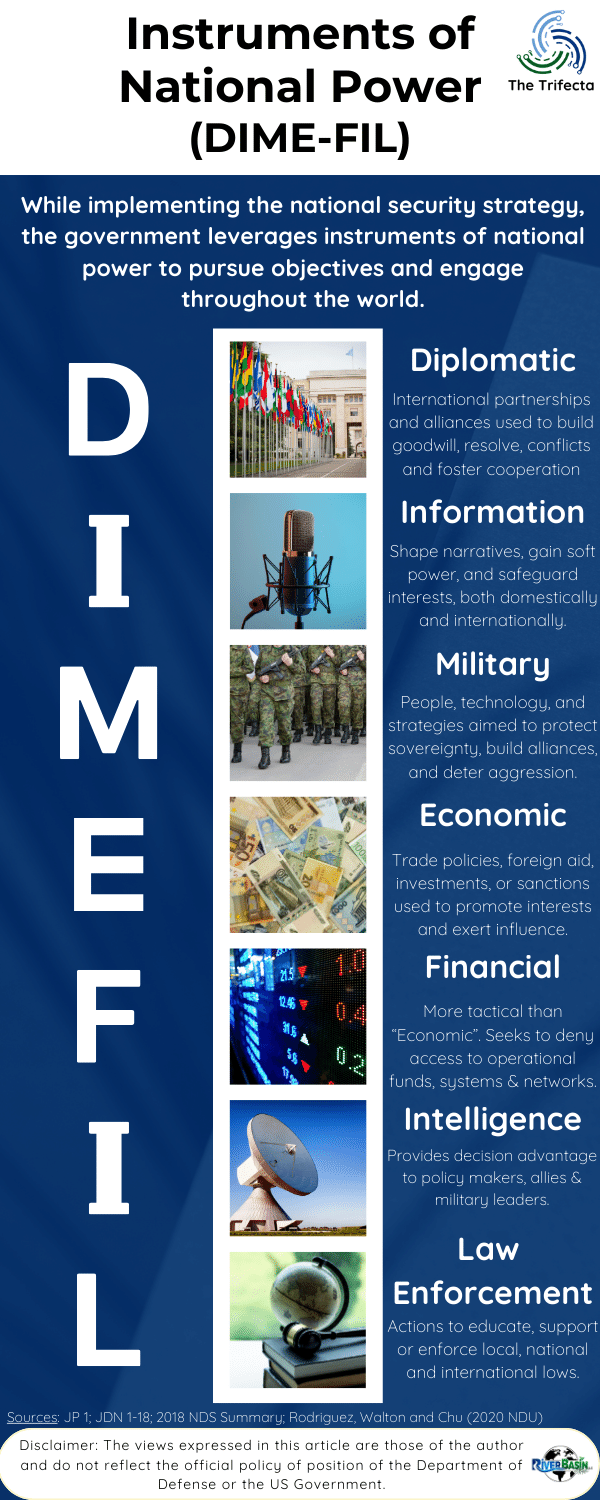NDIS – National Defense Industrial Strategy

BLUF
The importance of the NDIS lies as much in its existence and articulation as it does the content and priorities outlined. By acknowledging the multidimensional problems and envisioning solution sets, the US government transparently signaled to industry, allies, and partners the essential nature of their collaboration.
Why does this matter?
While the NDIS is mostly focused on manufacturing and technology, the energy industry benefits from understanding the vulnerabilities and risks identified within. Each risk is a different manifestation of geopolitical risk facing energy companies. Industry members “must appreciate their critical role in providing for the defense of the nation and consider the impact of their business practices on national security.” (p9)
This primer article provides an overview and highlights from the 60-page NDIS. Specific learnings for energy companies are noted.
Key Take-Aways
- COVID-19, Russia-Ukraine and Hamas-Israel “exposed serious shortfalls in both domestic manufacturing and international supply chains.”
- 4 priorities underpin the approach to achieving and optimizing defense needs.
- Allies and partners feature prominently throughout the NDIS and are fundamental to success.
Disclaimers: The views expressed in this article are those of the author and do not reflect the official policy or position of the Department of Defense or the U.S. Government. The appearance of external hyperlinks does not constitute endorsement by the United States Department of Defense (DoD) of the linked websites. The DoD does not exercise any editorial, security or other control over the information you may find at these locations.
COVID-19, Russia-Ukraine and Hamas-Israel “exposed serious shortfalls in both domestic manufacturing and international supply chains.”
The 2023 National Defense Industrial Strategy (NDIS) was the first of its kind. Fully appreciating the strategy’s details requires understanding its origins.
For the United States, COVID-19 revealed a dependency on foreign products and materials for everyday life. Most US readers likely have personal experience related to this learning, so we will not belabor it. The significance, however, is the wake-up call it provided to national and industry leaders. While the data was available prior to COVID-19, the pandemic brought the issue into specific relief.
Next, just as the threat of COVID-19 was waning in most areas of the world, Russia conducted a full-scale, unprovoked invasion of Ukraine in February 2022 (see previous post). Demand for western weapons systems increased dramatically, as an international coalition committed to supporting Ukraine’s resistance efforts. Producing those weapons to resupply depleted depots highlighted more inadequacies of the current US industrial base.
While the Russia-Ukraine war continued, a new conflict between Hamas and Israel started in late 2023. This most recent conflict exacerbated the demand for weapons and faster production. It further highlighted the current state of the US industrial base to support defense needs.
Events from 2019 through 2024 clarified the need for change in the US industrial base. This learning focused inward. Simultaneously, US leaders acknowledged a disturbing fact outwardly.
“Over three decades the People’s Republic of China became the global industrial powerhouse in many key areas – from shipbuilding to critical minerals to microelectronics – that vastly exceeds the capacity of not just the United States, but the combined output of our key European and Asian allies as well.” (pg8)
Propelled by both inward and outward drivers, the NDIS articulates a path forward to modernize the industrial ecosystem so it can become a deterrent to our adversaries.
4 priorities underpin the approach to achieving and optimizing defense needs.
Of the four NDIS priorities, three of them have applicability to the energy sector even though it is not the primary audience. Let’s walk through each priority and briefly consider how it could apply to energy companies.
*Note: In the NDIS, actions are not numbered. Numbers are used here for ease of reference.
NDIS Priority 1 – Resilient Supply Chains
Defined as: “can securely produce the products, services, and technologies needed now and in the future at speed, scale, and cost.” (p14)
Specific actions to achieve this priority include:
- Incentivize industry to improve resilience by investing in extra capacity.
- Manage inventory and stockpile planning to decrease near-term risk.
- Continue and expand support for domestic production.
- Diversify supplier base and invest in new production methods.
- Leverage data analytics to improve sub-tier visibility to identify and minimize strategic supply chain risks and to manage disruptions proactive.
- Engage allies and partners to expand global defense production and increase supply chain resilience.
- Improve the Foreign Military Sales process.
- Enhance industrial cybersecurity.
Application to energy: Again, energy is not the primary audience here. Still, actions 3 – 8 are applicable and could be considered by energy companies. Particularly for renewable energy supplies, improvements in actions 3 – 5 would benefit energy security.
NDIS Priority 2 – Workforce Readiness
Defined as: “A skilled and sufficiently staffed workforce that is diverse and representative of America.” (p26)
Specific actions to achieve this priority include:
- Prepare a workforce for future technological innovation.
- Continue targeting defense-critical skill sets in manufacturing and STEM.
- Increase access to apprenticeship and internships programs.
- Destigmatize industrial careers.
- Expand recruitment of non-traditional communities.
Application to energy: This priority is the least applicable to the energy industry.
NDIS Priority 3 – Flexible Acquisition
Defined as: “Acquisition strategies that strive for dynamic capabilities while balancing efficiency, maintainability, customization and standardization in defense platforms and support systems.” (p33)
Specific actions to achieve this priority include:
- Broaden platform standards and interoperability.
- Strengthen requirements process to curb “scope creep”.
- Prioritize off-the-shelf acquisition where applicable and reasonable.
- Increase access to intellectual property (IP) and data rights to enhance acquisition and sustainment.
- Consider greater use and policy reform of contracting strategies.
- Continue to support acquisition reform.
- Update industrial mobilization authorities and planning to ensure preparedness.
The NDIS makes a specific note that flexible acquisition does not apply to the entire acquisition field. Instead, it “relates strictly to DoD aiming to acquire an intelligent, balanced mix of platforms and systems, together with the benefits that accrue.” (p34
Application to energy: Action 1 is the most applicable, but from an asymmetric angle. Flexible acquisition is generally related to technology, as opposed to energy. That said, the Defense Department (via the Defense Logistics Agency) procures significant volumes of fuel. As platform standards and interoperability increase, there will likely be second- or third-order affects for fuel demand. Action 7 also has potential applicability to energy, depending on the breadth of mobilization authorities in scope for update.
NDIS Priority 4: Economic Deterrence
Defined as: “Fair and effective market mechanisms that support a resilient defense industrial ecosystem among the U.S. and close international allies and partners and contribute to economic security and integrated deterrence.” (p43)
Specific actions to achieve this priority include:
- Strengthen economic security agreements.
- Enable international interoperability standards through active participation in standards-setting bodies.
- Fortify alliances to share science and technology.
- Strengthen enforcements against adversarial ownership and cyber attacks.
- Strengthen prohibited sources policy.
Application to energy: These are all government-executed actions, which involve various parts of the Federal government. However, business practices by energy companies will be affected by and may affect these actions. For example, energy company investment in foreign countries or joint ventures may affect actions 1, 3, 4, and 5. Other risks covered in this section are adversarial capital, trade rule violation and intellectual property theft. All of those are risks for energy companies.
Allies and partners feature prominently throughout the NDIS and are fundamental to success.
Integrated deterrence is the centerpiece of the 2022 National Defense Strategy (NDS). A crucial and inherent part of integrated deterrence is close collaboration with allies and partners. Because the NDIS nests within the NDS, it is natural for the NDIS to reflect the priority of working with allies and partners.
“The global activity of pacing threats increasingly requires a global approach to defense industrial relationships, concerns, and competition. International allies and partners, each with their own robust defense industries, will continue to be a cornerstone of the DoD’s concept of Integrated Deterrence.” (p21)
A new term – Production Diplomacy – resulted from the international community’s highly collaborative efforts to supply munitions to Ukraine. The NDIS articulates a strategic opportunity learned from that experience:
“Incorporating allies and partners into a more networked or web-like production chain would enable expansion in production, additional capacity for a longer contest, and incentives among regional partners to cooperate in resisting coercion from adversaries.” (p22)
3 of the 4 NDIS priorities highlight allies and partners.
Resilient Supply Chains: “The DoD must develop a networked cooperative framework that enhances defense industrial output by working with allies and partners to de-risk supply chains and advance our ability to engage in co-sustainment, maintenance, repair, and overhaul.” (p22)
Flexible Acquisition: “The United States must seek commercial solutions and technologies from international allies and partners as well… Many other national industrial bases have their own strengths and core competencies.” (p37)
Economic Deterrence: “To mitigate the impacts of trade and predatory investment practices in defense supply chains and innovative technologies, the DoD will also seek to partner more closely with allied nations with complementary resources and capabilities.” (p45)
For the entire defense industrial base, the NDIS makes it crystal clear that allies and partners are crucial to success in a future conflict. Normally, we discuss the importance of allies and partners while preparing for or engaged in conflict. The NDIS moves the bar to the left into the pre-conflict and pre-crisis space. It clarifies the need for allies and partners as collaborators throughout the industrial ecosystem, which is the foundation of our ability to engage in conflict. The stronger the ecosystem, the more powerful it will be as a deterrent, which will decrease the likelihood of conflict. This circles us to the familiar quote, “If you want peace, prepare for war.”

Think About It…
- Which parts of your business directly support the defense industry?
- How is your business related to the 4 NDIS priorities?
- With which allies and partners does your company do business?
- When did your company first start doing business with the US government? If it doesn’t, why not?
- Why does your company take the approach it does regarding defense contracts?
DOPSR 24-T-1248





